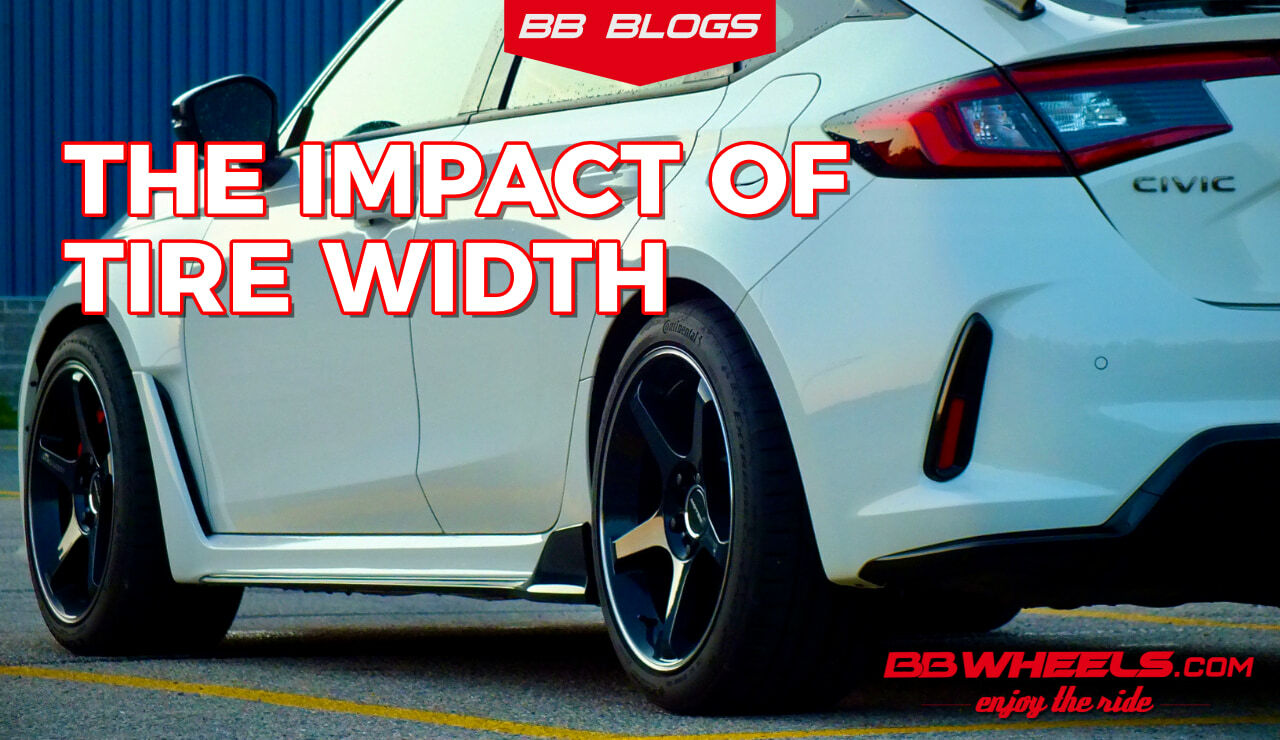Wide Tires vs. Narrow Tires: Weighing the Pros and Cons for Optimal Vehicle Performance
Posted by BB Wheels on 23rd Jan 2024

Wide Tires vs. Narrow Tires: Weighing the Pros and Cons for Optimal Vehicle Performance
The debate between wide and narrow tires is a longstanding one in the automotive world. While the choice can significantly impact the look of your vehicle, it goes far beyond aesthetics, touching on aspects of performance, safety, and efficiency. This comprehensive guide aims to help you understand the intricacies of wide versus narrow tires, ensuring you make the best decision for your driving experience.
Wide Tires: The Path of Performance and Style

Pros:
- Enhanced Traction and Handling: The larger contact patch of wide tires provides better grip, particularly useful in performance driving scenarios, enhancing cornering and overall vehicle handling.
- Visual Appeal: Wide tires are known for their aggressive, sporty look, offering an aesthetic upgrade to any vehicle.
- Improved Braking: The wider surface area can lead to more effective braking, particularly in emergency situations.
- Stability: With a broader footprint, these tires offer improved stability, especially at higher speeds or during dynamic driving.
Cons:
- Reduced Fuel Efficiency: The increased rolling resistance of wide tires can negatively impact fuel economy.
- Hydroplaning Risk: In wet conditions, the wide surface area can be susceptible to hydroplaning, as they may struggle to displace water as efficiently as narrower tires.
- Comfort: Wider tires might offer a stiffer ride by transmitting more road imperfections into the cabin.
- Cost: They are generally more expensive than narrow tires, both in terms of initial purchase and potential impact on vehicle wear.
Narrow Tires: The Avenue of Efficiency and Comfort

Pros:
- Fuel Economy: Narrow tires offer reduced rolling resistance, leading to better fuel efficiency.
- Wet Weather Handling: Their design allows them to cut through water more effectively, decreasing the risk of hydroplaning.
- Comfort: Typically, narrow tires provide a smoother ride, absorbing road imperfections more effectively.
- Less Strain on Vehicle: They exert less stress on vehicle suspension and steering components.
Cons:
- Traction: Narrow tires have a smaller contact patch with the road, which can result in decreased grip, affecting handling and cornering.
- High-Speed Stability: They may provide less stability during high-speed maneuvers or in dynamic driving situations.
- Aesthetics: For those seeking a sporty look, narrow tires might not provide the desired visual impact.
Considerations for Different Driving Conditions:
- Snow and Ice: In snowy conditions, narrow tires can perform better as they can cut through the snow, reaching the road surface more effectively.
- Off-Roading: Wide tires are generally preferred for off-road conditions due to their better traction on uneven surfaces.
- Urban Driving: For city driving, where fuel efficiency and comfort are more important, narrow tires could be more advantageous.
Final Thoughts:
Choosing between wide and narrow tires involves a careful consideration of your driving habits, the typical conditions you face, and your vehicle's capabilities. Wide tires excel in performance and aesthetics but may come with higher costs and reduced comfort. Narrow tires offer efficiency and a smoother ride, with some trade-offs in handling and visual appeal. It's essential to balance these factors against your personal preferences and driving requirements to make the best choice for your vehicle.
If you're uncertain about which tire type is best for your vehicle, don't hesitate to reach out for expert advice. Call us at BB Wheels at 320-333-2155 for personalized guidance and to explore a wide range of tire options tailored to your needs and preferences. Your perfect drive starts with the right tires, and we're here to help you make the best choice.

